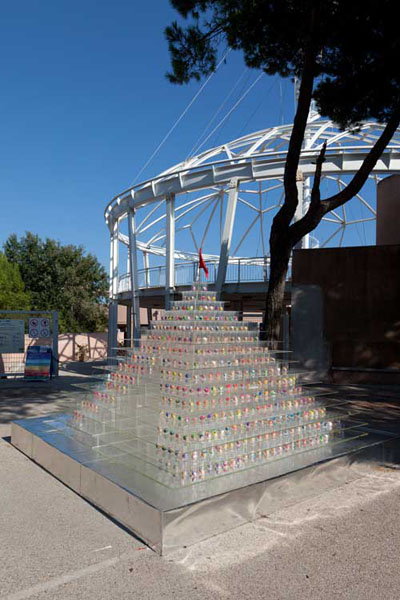Bangladesh - Ronni Ahmmed

The Tomb of Qara Köz recalls the campaign - from the maternal matrix/womb to entropic little deaths/tomb, at tangents and accords with transformative desire - of the Mughal princess Qara Köz who exerted powerful influence in the Florence of the Medici. The Tomb is organized in three planes: the multifarious narrative of Qara Köz established in the collective imagination, by Salman Rushdie’s The Enchantress of Florence and by the films Mughal-e-Azam (1960) and Jodha Akbar (2008), is (trans)located between realities in form of a performative architecture to activate an open network - and commons of emotion and memory - of Bengali (illegal) immigrants who are impacting the psycho-geographical tapestry of Venice. The second plane, springing from the shifting layer of associations - e.g. the main body of the pyramid consisting of 1254 glasses recalls Calvino’s Marco Polo - invoking the tales of fluid Venice(s); the cartoonish drawings on each egg employ fragments of Jacopo Bassano, Veronese, Jacopo Tintoretto, Paolo Farinati to tell the tale of Robert Coover’s Pinocchio’s adventures, Thomas Mann’s Aschenbach in search of purity, Mahler reading Li Tai-Po. The Tomb’s third plane pays homage to Ai Weiwei’s Documenta 12’s project, Fairytale, and invites 101 Bengalis and records/transmits their secret desires as these new immigrants pay alms and prays to the Tomb of Qara Köz to make their wishes to come true. The Tomb of Qara Köz, in an uninhibited polyphenomenality of display, evidences lived live(s) in transformation, in polyphony; its synthetic/syncretic approach, rooted in Opera Aperta, like traditional Bengali theater, attempts to stage a conceptual mise en abyme.
Text by
Ebadur Rahman